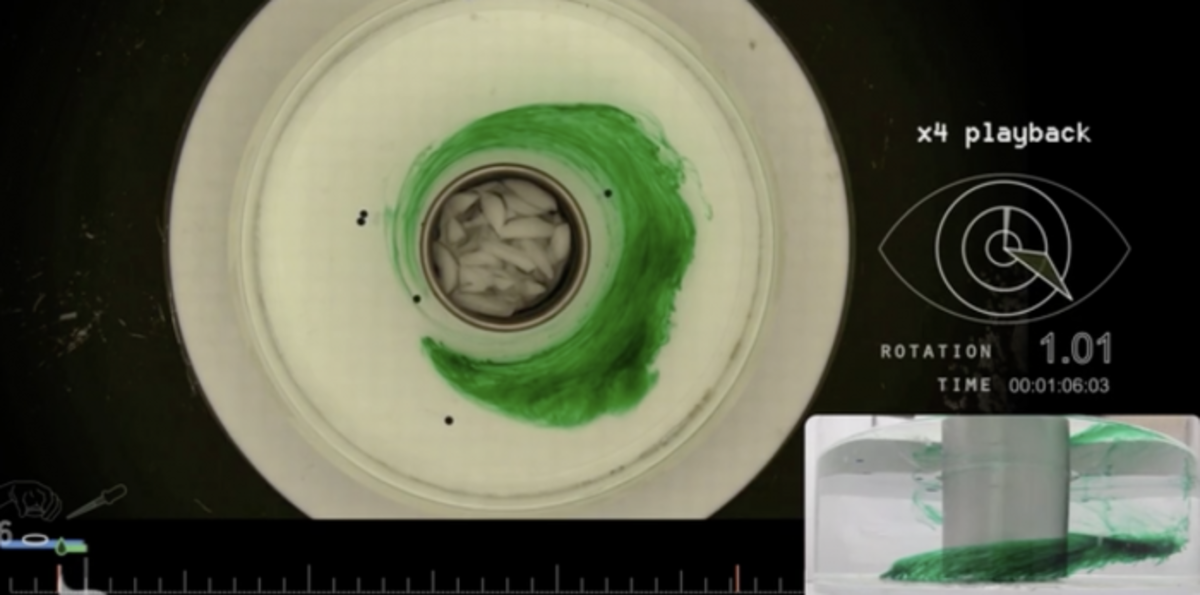PAOC Spotlights
12.307: Weather and Climate Lab

Reat this at MIT Technology Review
Lodovica Illari’s Weather and Climate Lab students watched visualizations like this rotating fluid demo of temperature differences and rotation effects. As warm water spins around a cylinder of ice, green dye represents the upper atmosphere’s westerly jet stream; pink shows the easterly surface trade winds.
After students in 12.307 left campus, they were able to study atmospheric wind patterns using a virtual laboratory created from video of a real experiment using animation software. The above video shows a can of icy water placed at the center of a circular tank of warm water on a slowly rotating platform, creating flow patterns that can be seen when dye is dropped into the tank. The water represents the air, the rotating platform the spinning earth, ice the cold poles, and warm water the equatorial region.
Cold water near the ice sinks down, drawing rings of fluid in at the top and out at the bottom. As rings flow inward at the top, conserving angular momentum, they swirl slightly faster than the tank, while rings at the bottom flow outward and swirl slightly slower. The resulting “winding effect” is revealed by the corkscrew patterns of the green dye streaks. These flow patterns are analogous to those on Earth, with an eastward-flowing “jet stream” aloft and westward-flowing “trade winds” at the surface. Online students were able to watch the video, download temperature and velocity data from the experiment, and manipulate the data to check principles of conservation of angular momentum and heat transport.
Read more about the “Weather in a Tank” curriculum that Illari developed along with EAPS professor John Marshall and research scientist Bill McKenna here.